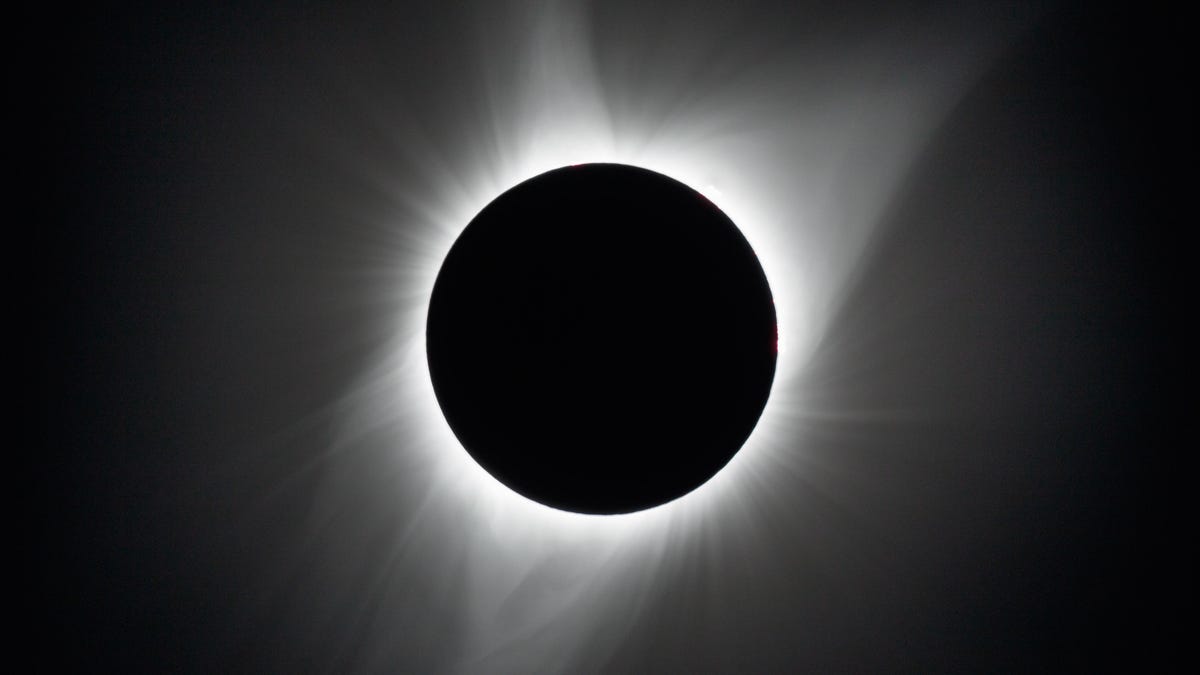Skygazers, the Great American Eclipse is on its way. On April 8, there’ll be a total eclipse over North America, the last until 2044. If you want a good look at it, but don’t live in the path of totality, you shouldn’t wait much longer to book accommodations and travel to a spot on the path.
A total solar eclipse happens when the moon passes between the Earth and the sun, blocking the sun and turning an otherwise sunny day to darkness for a short period of time. Depending on the angle at which you’re viewing the eclipse, you may see the sun completely shrouded by the moon (called totality) or some variation of it. The more off-angle you are and the further you are from the path of the eclipse, the less likely you’ll be to see the totality.
The 2024 total solar eclipse will happen on Monday, April 8. The Great American Eclipse will reach the Mexican Pacific coast at 11:07 a.m. PT/2:07 p.m. ET, and traverse through the US and Canada over time.
How about booking a seat in the sky? Delta Airlines made headlines for offering a flight that allows you to see the entire path of totality. Its first eclipse flight, from Austin, Texas, to Detroit sold out quickly. But as of Monday, Delta has added a second flight from Dallas to Detroit, which also covers the path of totality. The airline also has five flights that will offer prime eclipse viewing.
Of course, not everyone can get on one of those elusive eclipse-viewing flights. Here’s a look at other options to nab a chance to see this rare sight and what to know about it.
Total solar eclipse path
The eclipse will cross over the Pacific coast of Mexico and traverse the northeast over mainland Mexico. The eclipse will then make its way over San Antonio at approximately 2:30 p.m. ET on April 8 and move through Texas, over the southeastern part of Oklahoma and northern Arkansas by 2:50 p.m. ET.
By 3 p.m. ET, the eclipse will be over southern Illinois, and just 5 minutes later, will be traveling over Indianapolis. Folks in northwestern Ohio will be treated to the eclipse by 3:15 p.m. ET, and it will then travel over Lake Erie and Buffalo, New York, by 3:20 p.m. ET. Over the next 10 minutes, the eclipse will be seen over northern New York state, then over Vermont. By 3:35 p.m. ET, the eclipse will work its way into Canada and off the Eastern coast of North America.
NASA’s map shows the lucky strip of the US that will be within view of the total solar eclipse this April 8.
Best places to watch the Great American Eclipse
When evaluating the best places to watch this year’s total eclipse, you’ll first want to determine where you’ll have the best angle to see the totality. The farther off-angle you are — in other words, the farther north or south of the eclipse’s path — the less of an impact you can expect.
Therefore, if you want to have the best chance of experiencing the eclipse, you’ll want to be in its path. As of this writing, most of the cities in the eclipse’s path have some hotel availability, but recent reports have suggested that rooms are booking up. And as more rooms are booked, prices are going up. In Rochester, New York, for instance, hotel rates are hitting $1,000 or more per night on April 8 as demand for that date continues to rise. Some hotels in Rochester are completely booked.
So if you want to be in the eclipse’s path, and need a hotel to do it, move fast.
By comparison, Delta’s eclipse-viewing flight from Dallas to Detroit is priced between $739 and $1,150 at the time of publication.
Stephen Shankland captured this photo of the 2017 eclipse from his spot on the path of totality in Weiser, Idaho.
Eclipse eye safety and photography
As with any solar eclipse, it’s critical you keep eye safety in mind.
During the eclipse, and especially during the periods before and after totality, don’t look directly at the sun without special eye protection. Also, be sure not to look at the sun through a camera (including the camera on your phone), binoculars, a telescope or any other viewing device. This could cause serious eye injury. Sunglasses aren’t enough to protect your eyes from damage.
If you want to view the eclipse, you’ll instead need solar viewing glasses that comply with the ISO 12312-2 safety standard. Anything that doesn’t meet that standard or greater won’t be dark enough to protect your eyes.
If you don’t have eclipse viewing glasses handy, you can instead use indirect methods for viewing the eclipse, like a pinhole projector.
In the event you want to take pictures of the eclipse, attach a certified solar filter to your camera. Doing so will protect your eyes and allow you to take photos while you view the eclipse through your lens.
2024 eclipse compared to 2017
The last total solar eclipse occurred in 2017, and many Americans had a great view. Although there are plenty of similarities between the 2017 total solar eclipse and the one coming April 8, there are a handful of differences. Mainly, the 2024 eclipse is going to cover more land and last longer.
The 2017 eclipse started over the northwest US and moved southeast. Additionally, that eclipse’s path was up to 71 miles wide, compared with a maximum width of 122 miles for this year’s eclipse. Perhaps most importantly, the moon completely covered the sun for just two minutes and 40 seconds in 2017. This year, maximum totality will last for nearly four-and-a-half minutes.

